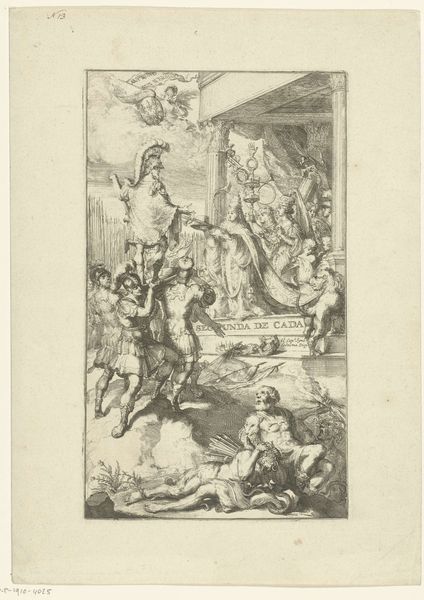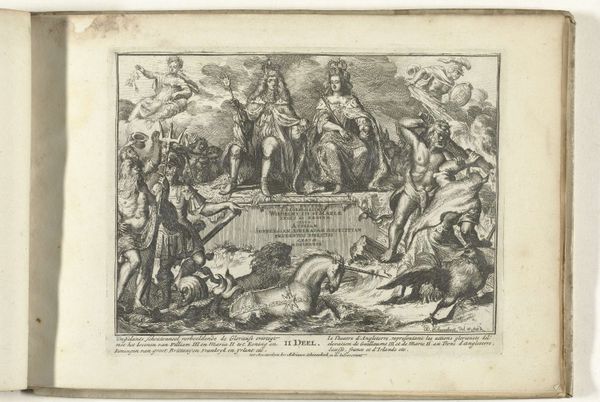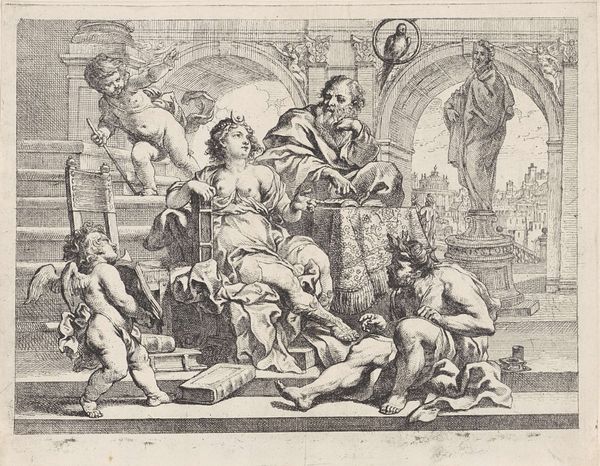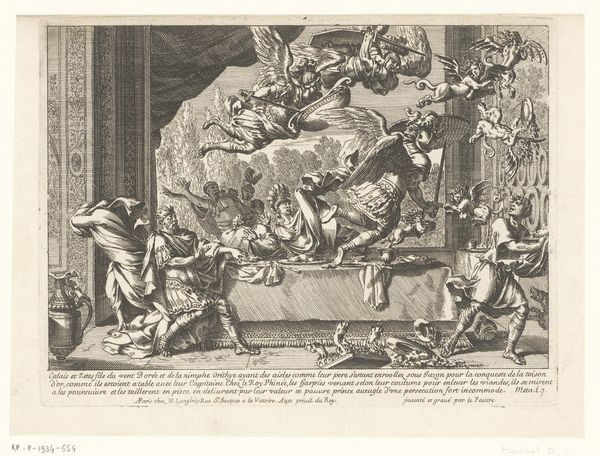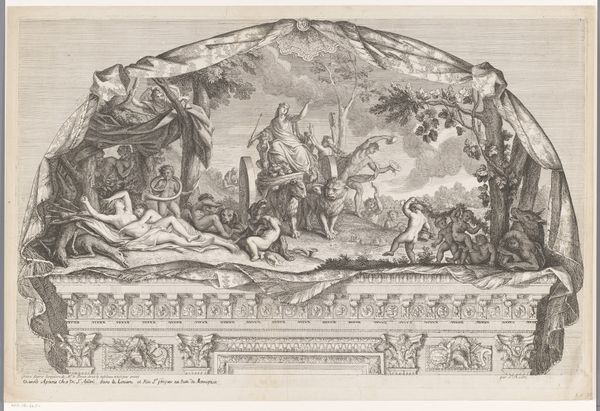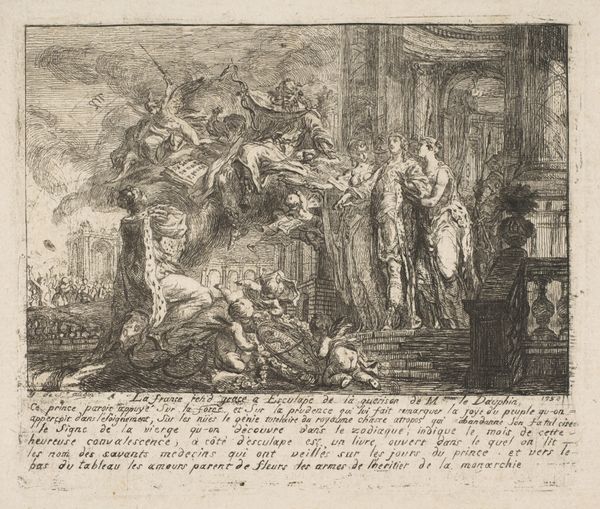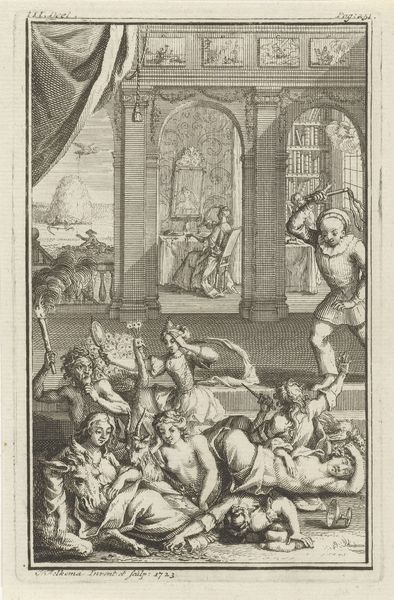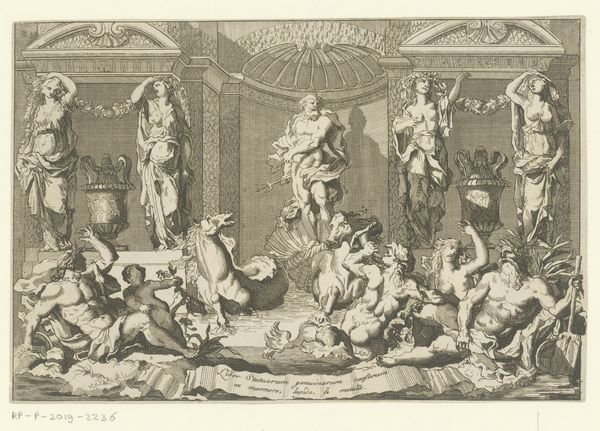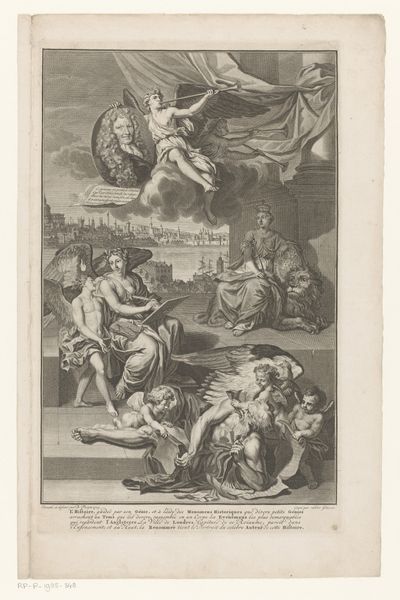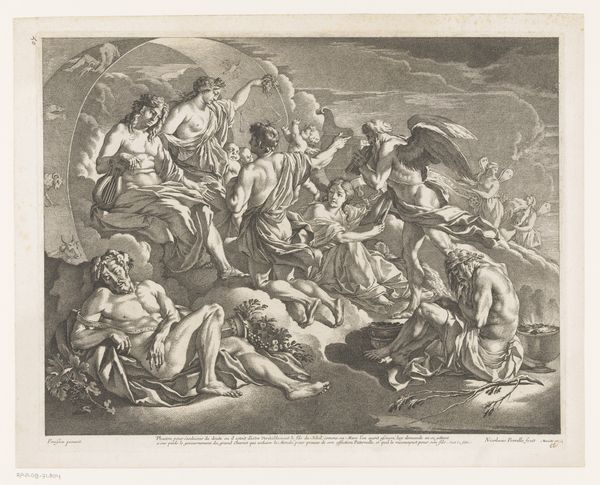
print, engraving
#
narrative-art
#
baroque
# print
#
old engraving style
#
history-painting
#
engraving
Dimensions: height 142 mm, width 175 mm
Copyright: Rijks Museum: Open Domain
This etching, "Het hol en de tempel van Trophonius," was made by Romeyn de Hooghe in the late 17th century. The image is made by incising lines into a copper plate, which is then inked and printed onto paper. It's a reproductive medium, which means that it’s designed for the wide distribution of imagery. In this scene, we see figures entering and exiting the cave of Trophonius, a mythical figure associated with wisdom and knowledge. The use of etching allowed de Hooghe to create intricate details, from the textures of the figures' clothing to the shadows that define the cave's depths. The lines create a sense of depth and movement, pulling the viewer into the scene. Etchings like this were often made in multiples and sold to a wide audience, making art more accessible than paintings. The labor-intensive process of creating the etching plate was a skilled craft, requiring precision and expertise. It's an example of how art could be both a creative expression and a commercial enterprise. The print is an artifact of its time, showing how stories and knowledge were circulated through reproducible media.
Comments
No comments
Be the first to comment and join the conversation on the ultimate creative platform.
